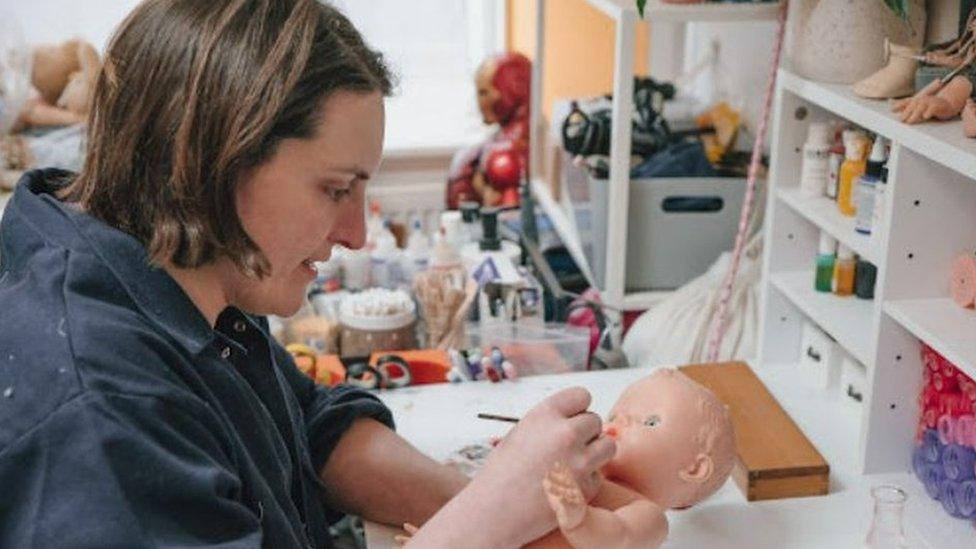The Leith hospital where patients are broken Barbies and bears
- Published

The toy hospital fixes dolls and teddy bears in need some tender loving care
You know a child's toy has been well loved when they appear unrecognisable.
After years of play, dolls can become limbless and lifeless, while a favourite teddy bear can look like a used rag.
A toy hospital in Leith, Edinburgh, is giving them a new lease of life.
Since opening in 2017, the hospital's patients have included Barbies with broken limbs, teddy bears with broken ears and dolls in need of hair transplants.

The prices for repair range depending on the procedure required to fix the toy
Director Mari Jones set up the toy hospital off the back of her puppet and toy-making business, Picture to Puppet.
Instead of doctors and nurses, this hospital employees people in roles such as teddy admin, dolly costumer and dolly hair stylist.
Manager of the doll department, Charlotte Abbott, did not begin her career at the toy hospital.
"The job I had before this was helping build a prototype wind turbine," she said. "We ran out of funding and I got made redundant.

Charlotte Abbott mends, paints and sews dolls which need repaired
"My colleague, who I was working with said 'Oh, my partner has a toy hospital, they need some help, they're kind of a bit short staffed.
"'While you're looking for jobs, why don't you give them a hand because you've got a lot of transferable skills?'"
Charlotte decided she liked the job so much that she stayed.
In one month, she estimates they repair about 100 toys.
And she believes the shop has become more popular over time due to an increase in repair programmes on TV.
"I think with things like The Repair Shop kind of put in people's minds that things can be repaired," she said.
"Lots of people get in touch thinking, 'Oh, gosh! My dolls in pieces! I don't even think it can be repaired.'
"And actually, it turns out they need restringing, which is one of our kind of easier and cheaper repairs."

Toys often come in looking beyond repair and leave looking brand new

Lots of toys which come to the hospital are often years old
Abbott also believes more people have become environmentally conscious and no longer want to throw toys away.
Although their main focus is teddies and dolls, the toy hospital receives visits from all different kinds of toys.
They range from well-loved toys which are decades old to a newly-purchased toy which was chewed by a dog.
"We tend to find with the teddies, I think the customers age range is quite spread," Charlotte said.
"It's older people who've kept their childhood toy, it's parents who have got little kids whose things need repairing."
"With the dolls, it's definitely more skewed towards older people with their childhood toys. I think a lot of newer dolls, they're poorly built, and they're quite complicated, so it's quite expensive to repair them."